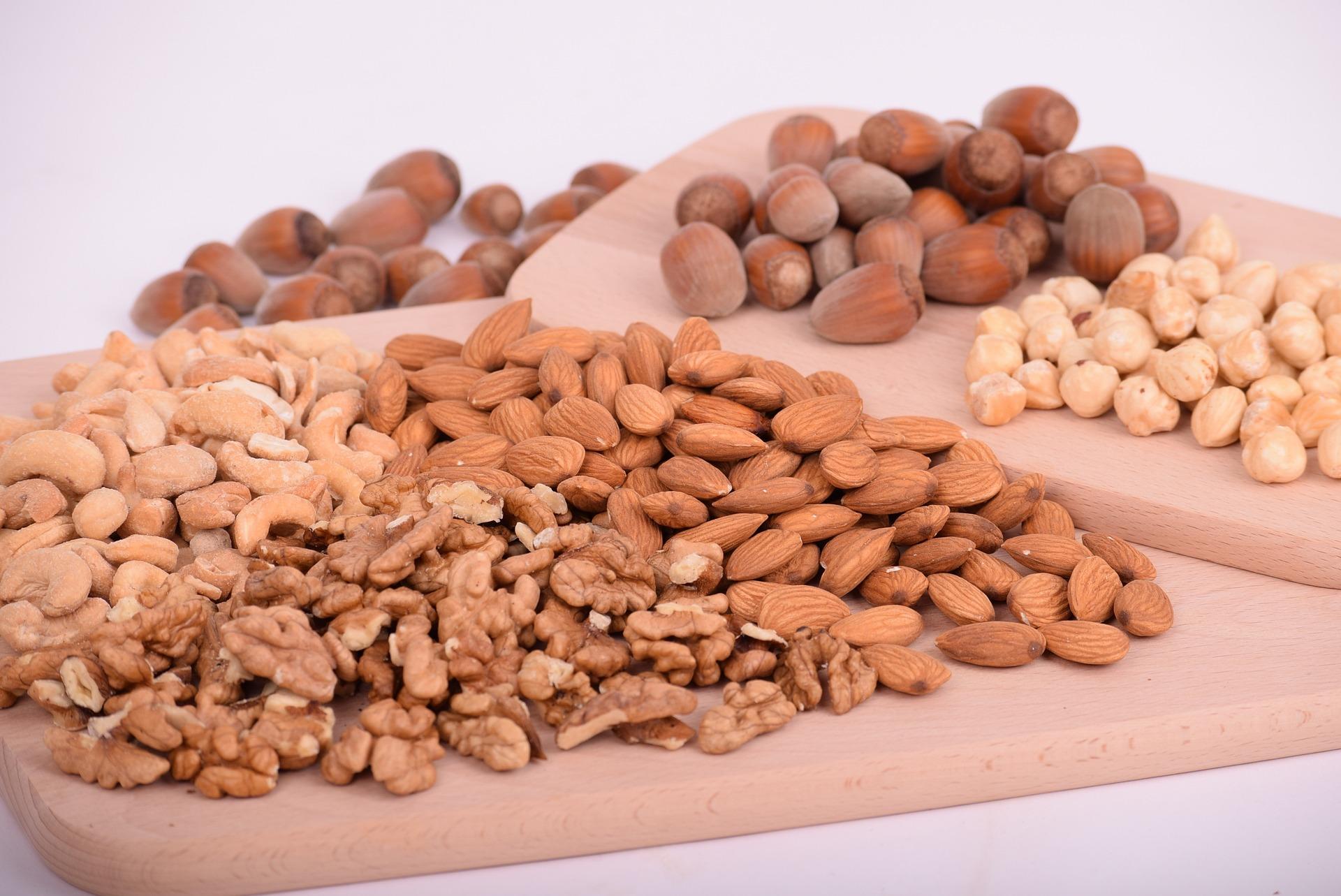
What is a nutrient?
When discussing our diets and food intake, we often talk about nutrition and ‘nutritional values’, but what does this actually mean? The easiest way to think of a nutrient is as a building block that our body needs to make and energise new cells or as a fuel that our body needs to perform necessary processes for our survival.
We get nutrients from our foods, all containing several different nutrients. This can turn a healthy diet into quite a balancing act since we need to eat several different nutrients for our bodies to stay healthy.
To make matters even more complicated, there are different categories of nutrients as well, but don’t worry, today we’ll be exploring the various nutrients to form an understanding of what a healthy diet looks like and how we can consider the nutrition in the different foods we eat.
There are two overarching categories of nutrients that diet experts and nutritionists often talk about. Macronutrients and Micronutrients. Macronutrients are split into three core categories and comprise most of the critical nutrition in food. Essentially, we need them in much higher volume to survive. Micronutrients are vitamins and minerals that we need in much smaller quantities; however, they are still significant since deficiencies can result in numerous unpleasant health conditions.
Let's first take a look at Macronutrients to understand the distinction better.

Macronutrients
Macronutrient is a term that can be easily broken down into its constituents: macro, meaning big or large, and nutrient, meaning a chemical compound used for body function. Specifically, they are the fuels our body needs in high quantities to keep working healthily and thus keep us alive.
Since they sound important when we describe them like this, let’s get to know each better. The three main macronutrients are carbohydrates, proteins and fats. The three of these come in different biological/chemical shapes and sizes, but they each serve a different purpose to each other, which is what we use to categorise them.
Carbohydrates: Carbohydrates, or carbs for short, are the truest equivalent to a ‘fuel’ that living organisms use as a source of energy. Chemically, they are the sugars, starch, and fibre in food. Our bodies break down these structures during digestion, leaving us with our body's preferred energy format, “Glucose”.
There are two different kinds of carbohydrates that we find in foods. It's important to know the difference since both have dietary implications.
The first kind of carbohydrate is called a simple carbohydrate. A simple carb is a small molecule that the body can quickly break down. This type of carb is found in fruits, sweets/candy, and carbonated beverages (pop/soda).
These carbs will give you a much quicker release of energy, which is why the foods they are found in are considered snacks that one would eat as a refreshment rather than a full meal. Any nutritionist will tell you that snacking frequently is a bad habit and often wholly unnecessary when not performing highly stressful and energetic activities.
The second kind of carbohydrate is called a complex carbohydrate. This is the structural opposite of a simple carb, typically taking the shape of a long chain of sugar molecules. Because of the complexity and size of the molecule, complex carbs take longer to break down and therefore provide much longer-term energy to the body.
Complex carbs are found in vegetables, legumes, nuts, and bread products made using a whole grain of wheat. This means that white bread does not qualify as a complex carb source since it is refined only to contain starchy carbs.
Nutrition is complicated and varies from case to case, but generally, the more natural the food product, the better chance it has of containing healthier complex carbs.
Protein: While carbohydrates serve as the fuel in the body, protein can be thought of more so as the building blocks. As living organisms, we digest the proteins of other living matter, breaking down the amino acids in their proteins and building them back into our own.
Protein is arguably the most vital of the macronutrients, even if we tend to consume more carbohydrates. This is because while missing some carbs from our diet might make us feel a little tired, missing protein will mean that our cells can no longer replace themselves, and our bodies will start to deteriorate. Luckily for us, almost all food, which is derived from living things, contains proteins.
Some protein structures are challenging to digest, so this can be a reasonable explanation for many food allergies people have. For example, if you or someone you know has a gluten allergy, this might be why.
The best source of protein is many sources because eating different protein sources ensures that we get all the amino acids we need. The most significant protein sources include lean meats, seafood, dairy products and nuts, seeds and legumes for vegans and vegetarians.

Fats: Fats, similarly to carbohydrates, are stores of energy made from chains of molecules. However, fats are longer-term storage of energy that can be stored as tissue in the body and broken down when needed.
Fat has many vital roles in the body, such as regulating body temperature, permitting the absorption of fat-soluble vitamins and insulating our organs to protect them.
Fat also comes in different forms: saturated, unsaturated and trans fats. Saturated fats are the kind of fat that we get from animal products like meat, eggs, and dairy. Unsaturated fats are more likely to be found in plant products and fish and are generally considered more healthy because the body can break them down slightly more quickly.
Trans fats found in processed and fast foods are the least healthy and should be avoided in a healthy diet. Luckily, this can be done without compromising flavour simply by choosing healthy and natural ingredients.
Despite its importance, fat is required in the least quantity compared with the other macronutrients, making up about 5% of the intake of a healthy diet.

Micronutrients
Now that we’ve covered what a macronutrient is, it's time to look at micronutrients. While macronutrients are the building blocks and fuel of the body, micronutrients can be likened to the little working parts of a complex machine. They’re small, varied, and on their own, don’t constitute much of the diet, but it's important to get them all, or else we can fall into the trap of numerous health complications.
Micronutrients fall under two main categories that we’ll explore: vitamins and minerals.
Vitamins are the organic compounds that we need in small amounts and can be found in various foods. The vitamins humans need to function correctly are known as the essential vitamins listed below:
- Vitamin A
- Vitamin C
- Vitamin D
- Vitamin E
- Vitamin K
- Thiamin (B1)
- Riboflavin (B2)
- Niacin (B3)
- Pyridoxine (B6)
- Folate (B9)
- Cobalamin (B12)
- Biotin (B7)
- Pantothenic Acid (B5)
With all these vitamins playing a vital role in the body, it's easy to see why small changes in diet and lifestyle can enormously impact health. Vitamins prove the importance of eating various foods since there’s no other way to get everything you need besides supplementation, which we’ll talk about momentarily.
Minerals are slightly different since, unlike vitamins, they are inorganic elements. Nevertheless, our bodies need to get a small amount of them too. If you’ve heard about iron deficiency (anaemia), or calcium deficiency, you know this is no laughing matter. The implications of missing out on these minerals can be very severe.
Similarly to vitamins, the key to getting enough minerals in your diet is also variety.

Supplementation
In modern foods, which are highly engineered towards flavour and quantity over nutrition, it's pretty hard to get all the requisite micronutrients within our allotted calories daily. It’s a tragic reality that a lot of food is less nutritious than it used to be.
Fortunately, we have a solution to this problem through supplements. Typically, supplements would be prescribed by doctors in the case of deficiencies. Although this is still the case, the free market has taken over proactively and provides products such as pills and gummies that can be tailored to suit the intake requirements of their user. These supplements are a genius way of limiting ourselves to healthy calories while still getting everything we need.
I must reiterate, take care if you decide to go down the medicinal route since mistakes can often be made when medical professionals aren’t consulted beforehand. Luckily, many modern providers of speciality supplements have their patients evaluated by a nutritional expert so that they can get exactly what they need.
Afterword
Thank you for reading this article about Macro and Micronutrients; I hope you learned something. If you are interested in reading more information about nutrition, biology, or a host of different academic subjects, check out the rest of the articles here on Superprof. We’re sure you’ll find something that will pique your interest.















